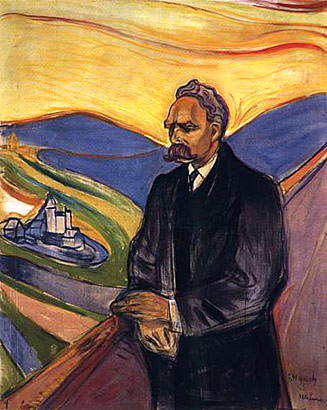Caspar David Friedrich: Master of Romantic Landscapes
Caspar David Friedrich, born in 1774 in Greifswald, Germany, stands as one of the most influential figures of the Romantic movement in art. His work, characterized by a profound sense of melancholy and spirituality, captures the essence of the 19th-century Romantic ideal, reflecting a deep connection between humanity and the natural world. Friedrich’s landscapes are not merely depictions of the environment; they are introspective and meditative spaces that invite viewers to explore the sublime and the transcendent aspects of existence.
The Romantic Vision
Friedrich’s art embodies the Romantic vision of nature as a source of spiritual and emotional renewal. Unlike his contemporaries who focused on historical or mythological subjects, Friedrich chose to represent the natural world with an emphasis on its vastness and mystery. His landscapes often feature solitary figures or monuments, such as ruins and crosses, that emphasize the insignificance of humanity in the grand scheme of the universe. This sense of insignificance is not portrayed as despairing but rather as an opportunity for profound introspection and spiritual awakening.
Iconic Works and Their Meanings
One of Friedrich’s most iconic paintings, “Wanderer Above the Sea of Fog” (1818), exemplifies his approach to depicting the sublime. The painting shows a lone figure standing atop a rocky precipice, gazing out over a fog-covered landscape. The viewer, placed in the same position as the wanderer, is invited to experience the vastness and mystery of the scene. The fog acts as a metaphor for the unknown, while the figure’s contemplation suggests a quest for understanding and enlightenment.
Another significant work, “The Abbey in the Oakwood” (1810), portrays a ruined Gothic abbey amidst a desolate landscape. The painting reflects themes of decay and transience, underscoring the idea that even grand human achievements are subject to the ravages of time. The starkness of the scene, combined with the somber tones of the painting, evokes a sense of melancholy and reverence for the passage of time.
In “The Sea of Ice” (1823-1824), Friedrich presents a dramatic and dynamic scene of a shipwreck amidst a field of jagged ice. The painting’s tumultuous composition and stark color palette convey the raw power of nature and the fragility of human endeavors. This work captures the Romantic fascination with the uncontrollable forces of nature and the limits of human control.
Artistic Techniques and Innovations
Friedrich’s technique is characterized by a meticulous attention to detail and a distinctive use of light and shadow. His landscapes are often shrouded in a delicate mist or enveloped in twilight, creating a sense of mystery and depth. The contrast between light and dark areas in his paintings enhances the emotional impact, drawing the viewer’s attention to the symbolic elements within the composition.
Friedrich’s use of color is also noteworthy. He employed a restrained palette, often favoring cool tones and muted hues that contribute to the contemplative and serene atmosphere of his works. The subtle gradations of color and light in his paintings create a sense of space and depth, inviting viewers to explore the layers of meaning embedded in the landscape.
Influence and Legacy
Caspar David Friedrich’s influence extends beyond his own time and has left a lasting impact on the art world. His approach to landscape painting, with its emphasis on the emotional and spiritual dimensions of nature, paved the way for future generations of artists. The Romantic ideal of nature as a source of inspiration and reflection continued to resonate throughout the 19th and 20th centuries, influencing movements such as Symbolism and Expressionism.
Friedrich’s work also played a significant role in shaping the development of modern art. His exploration of the relationship between humanity and nature, as well as his innovative use of light and color, inspired many artists to experiment with new ways of depicting the world. His influence can be seen in the works of later artists, including the Impressionists and the Post-Impressionists, who continued to explore the emotional and subjective aspects of painting.
Friedrich’s Personal Life and Artistic Development
Caspar David Friedrich’s personal life was marked by both triumph and tragedy. Born into a modest family, he faced numerous hardships throughout his life, including the early deaths of his parents and siblings. Despite these challenges, Friedrich pursued a career in art, studying at the University of Greifswald and later at the Academy of Fine Arts in Copenhagen.
His early works were influenced by the prevailing Neoclassical style, but he soon developed his own distinctive approach. The Romantic movement, with its emphasis on individual experience and the sublime, resonated deeply with Friedrich, and he became a leading figure in this artistic revolution. His innovative approach to landscape painting garnered him recognition and acclaim, but he also faced criticism from some quarters who viewed his work as overly sentimental.
Throughout his career, Friedrich remained dedicated to his artistic vision, producing a body of work that continues to be celebrated for its profound emotional and spiritual depth. His paintings are now held in major museums and collections around the world, and his legacy endures as a testament to the power of art to evoke the sublime and the transcendent.
Conclusion
Caspar David Friedrich’s art remains a powerful testament to the Romantic vision of nature as a source of spiritual and emotional insight. His landscapes, characterized by their introspective and meditative qualities, invite viewers to explore the profound connection between humanity and the natural world. Through his innovative use of light, color, and composition, Friedrich created works that continue to inspire and resonate with audiences today. His influence on the art world is a testament to the enduring power of his vision and the timeless appeal of his artistic achievements.




